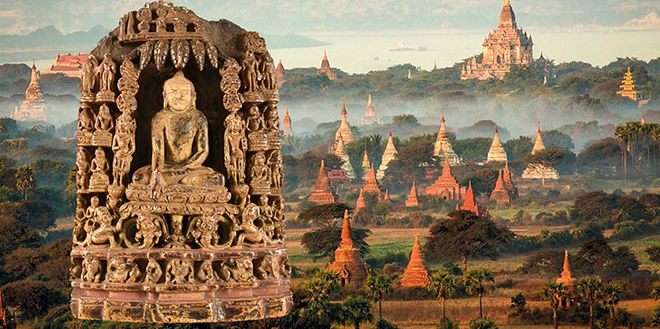
Steele with scenes of the Buddha’s life, Bagan, ca. 1100.
This talk will query the ontological status of a conceptually and materially complex class of objects: pyrophyllite steeles probably first made in the Irrawaddy Basin in Myanmar between circa 1000–1200 CE and eventually re-made in the Himalayas and Tibetan Plateau. Are these steeles best understood as sculptures, as concrete embodiments of revered beings, or as receptacles with richly carved exteriors and secret interiors? By using a multi-pronged approach, including paleoradiology exams, this talk will shed new light on materiality, mobility, and identity. It will also reflect on acts of reuse not only as reclamations in times of scarcity but as crucial means of spreading esoteric Buddhist teachings.
A Global Middle Ages lecture.
Nachiket Chanchani is an associate professor in the Department of the History of Art at the University of Michigan, Ann Arbor. He studies South Asian, Himalayan, and Southeast Asian art, architecture, and visual culture. He has authored three books—Mountain Temples and Temple Mountains: Architecture, Religion, and Nature in the Central Himalayas (2019, reprinted 2021), Amaruśataka and the Lives of Indian Love Poems (2022), and India’s Composite Heritage (2022, reprinted 2023)—many journal articles, and opinion pieces published in leading newspapers. He has been involved with projects at several museums and his research has been supported by numerous fellowships.
